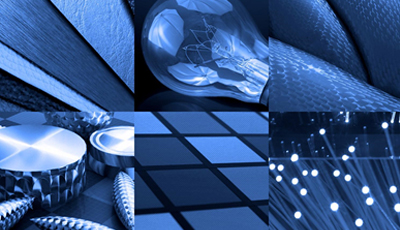ANSYS SPEOS predicts the illumination and optical performance of systems to save on prototyping time and costs while improving your product’s efficiency.
To design and optimize your optical system quickly and easily, SPEOS combines lighting performance modeling with extensive, dedicated libraries and optimization capabilities. With SPEOS, you can study the interactions of photons with mechanical geometries to quickly create a functional illumination system for your product.
Combined with HPC, SPEOS delivers results quicker with an unprecedented level of accuracy. High-performance computing (HPC) is a game-changer that will help you meet your deadlines without sacrificing accuracy.
SPEOS has an intuitive, comprehensive user interface that helps you increase productivity by computing GPU-based simulation previews in the ANSYS multiphysics ecosystem.
Lighting System Modeler
Create your system and automate your design using easy-to-use, intuitive expert tools. Get an in-depth understanding of how light works in your systems by modeling, simulating and optimizing the luminous flux in any future system or product. You can now accurately predict stray light, hot spots and uniformity, and ensure your system’s performance, evaluating illuminance and luminous intensity in the visible light range.
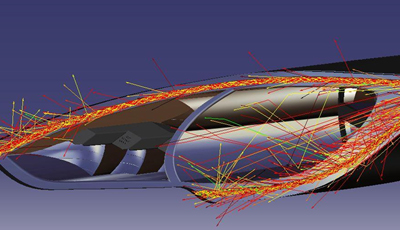
Lighting System Analyzer
Analyze lighting systems and materials’ efficiency, and calculate spectral luminance, extending your analysis from ultraviolet to near infrared. Simply perform physically correct colorimetry and photometry measurements and studies to validate your choice of materials and light source, and make sure your system matches the design requirements. You can also check the compliance of your systems with industry or legal specific standards with a click.
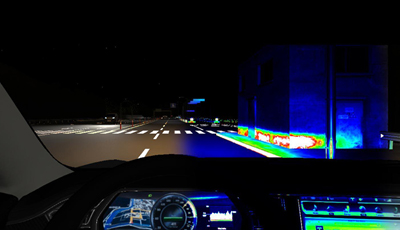
Lighting System Visualizer
Determine visual aspect, reflection, visibility and information legibility according to the human observer. On a screen or in VR, ANSYS SPEOS provides you with a unique visual simulation of your product as it will be seen in its final context.
- Simulate visual perception based on a physiological human vision model and predict visual obstructions, glare and annoying reflections.
- Improve visual perceived quality by optimizing colors, contrasts, harmony, light uniformity and intensity.
- Take into account ambient lighting conditions, including day and night vision.
- Enjoy both still and real-time visualization of your product from any point of view.
- Change the BRDF of surfaces and see the various final effects.
The 3D virtual reality models can be projected in full scale on a powerwall or in a CAVE, or deployed in any VR headset, for a fully immersive experience.
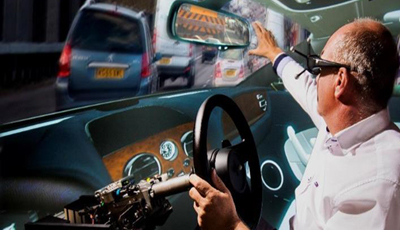
Optical Design Optimizer
Optimize optical system lighting performance, determining optimal mechanical and optical design parameters. The optical design optimizer helps you to easily bridge the gap between optics and CAD. You can create any type of optical component, including lighting system lamps, switches, displays and luminaires, and use them directly in your CAD software. Assess the optical performance of your system, and benefit from integrated tools for the optimization of your optomechanical system. You can also process tolerance studies optimize the performance of your systems.
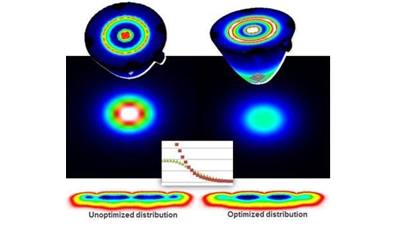
Optical Part Design
Create dedicated optical geometries for the design of lighting systems with the automated generation of prisms for light guide or pillow optics for reflective and refractive parts. Design the best beam sharp cut-off reflector shape and model manufacturing constraints like drafting and milling. Optical part design provides you with unique geometrical modeling capabilities, letting you automatically create geometries with several dozen construction elements to create a near-field lens, for instance, with just one click. Build surfaces to collimate light rays that are impossible to create without approximations without OSD. This is the best way to increase optical designers’ productivity and to shorten the engineering development time while accelerating convergence on style.
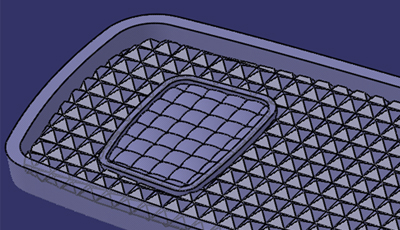
HUD Design and Analysis
Design automotive HUD imaging systems quickly and easily. HUD design and analysis lets you study the technical feasibility of your HUD according to windshield shape and packaging constraints. Automatic tools help design the optical system and improve the perceived quality of the image very simply by:
- Optimizing layout and shapes.
- Generating rotation axis.
- Calculating angles for several drivers’ sizes.
- Automatically displaying the required optical volume.
- You can also objectively qualify the image quality and compare the performances of several technical options, scoring optical and vision performances. You can check the compliance against your own acceptance criteria.
As soon as the design of the dashboard, pillars and instrument panel are available, you can create a complete simulation of the driver’s perception to see how he will perceive the virtual image.
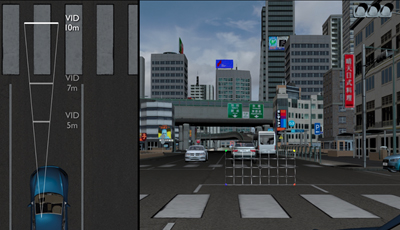
Optical Sensor Test
Simulate and assess camera and lidar raw signals in a driving environment. Apply smart electronic processing intuitively and enable sensor layout on vehicles. The optical sensor test provides a built-in environment for easily evaluating the impact of the different design versions (low end, high end) on the sensor perception and product compliance, at an early design stage. Starting from a digital mock-up, including surrounding geometries, sensor layout and surrounding targets, you can physically model lidar, ultrasonic and camera systems. Integrated into the CAD platform, you can get the data acquired by your sensor system, considering its characteristics and constraints. Simply perform complete analyses for different sensor configurations on various scenarios in approximately 15 minutes, without the need for manual operations. Use your results to determine the expected performance of a specific sensor supplier.
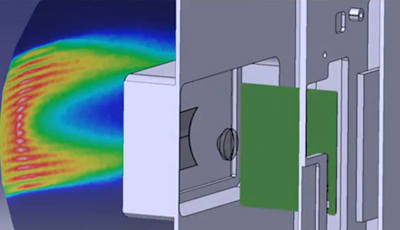
Manufacturing Variation Simulation
Add the effect of product variation, including position and form in your SPEOS simulations, to study its impact on appearance, performance and function from the customers’ perspective. Assessing optical results has never been so simple: move parts using measurements and relative targets and perform interactive reviews of the result.
- Reduce sensitivity to variation by optimizing product assembly features and variations.
- Check that regulation requirements can still be achieved with the worst-case variation.
- Verify that your optical system will meet the required specifications with component variation.
- Check reflections in worst-case conditions and verify that lit instruments and information are clearly visible and legible.
- Study the appearance and performance of LEDs and light guides when taking account of assembly and part variation.
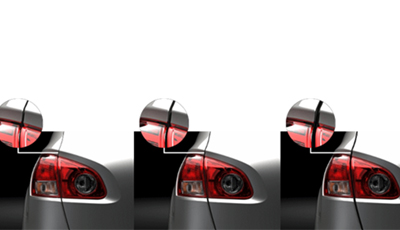
Far Infrared Extension
Extend the optical simulation wavelength range up to the far infrared. Model thermal radiation directly from the body temperature field.
Far infrared extension provides unique capabilities dedicated to designing and analyzing vision, as well as detection systems used in the defense industry, for example on land systems, UAVs and satellites. Simply simulate and optimize visible, near- and far-infrared systems (wavelength beyond 2000 nm), for active and passive detection. Automatically calculate and understand the efficiency of your optical system, using dedicated tools for illuminance, luminance and intensity measurements. In addition to camera acquisition, you can visualize your field of view with pixel grids projected on the 3D environment to determine detection capabilities and to process simulated camera acquisition with image processing. This enables optical designers and embedded software developers to collaborate on the digital mockup. You can easily assess the performance and robustness of your vision and detection systems on various scenarios, reducing the need for physical testing.
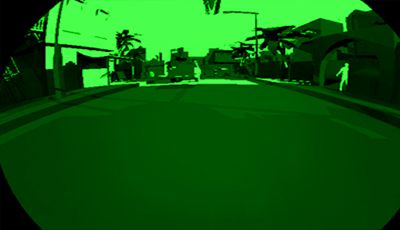
Extensive Optical Library
Select source, material, sensor and standard models in this online resource to get a physically correct simulation of your digital product.
Our library is a showroom of thousands of lights, materials and tools. It is the place for creative professionals to get inspired. Benefit from the latest innovations in light, materials and related elements, with over 4,000 cutting-edge samples and items:
- Materials: Pick and apply predefined materials to recreate any surface, texture and color.
- Light sources: Improve your light performance and create appealing lighting fixtures with our ready-to-use LEDs, fluorescent, incandescent and HDI bulbs, and OLEDS.
- Cameras and lenses: Find all types of lenses and cameras to create or re-create any optical system with a click.
- Standards: Easily check the compliance of your products to official SAE or ECE regulations and standards on a virtual prototype.
- Tools: Use predefined sensors, environments and photometric or color measurements easily
Each item in the OPTIS Library comes with its dedicated, comprehensive information.
